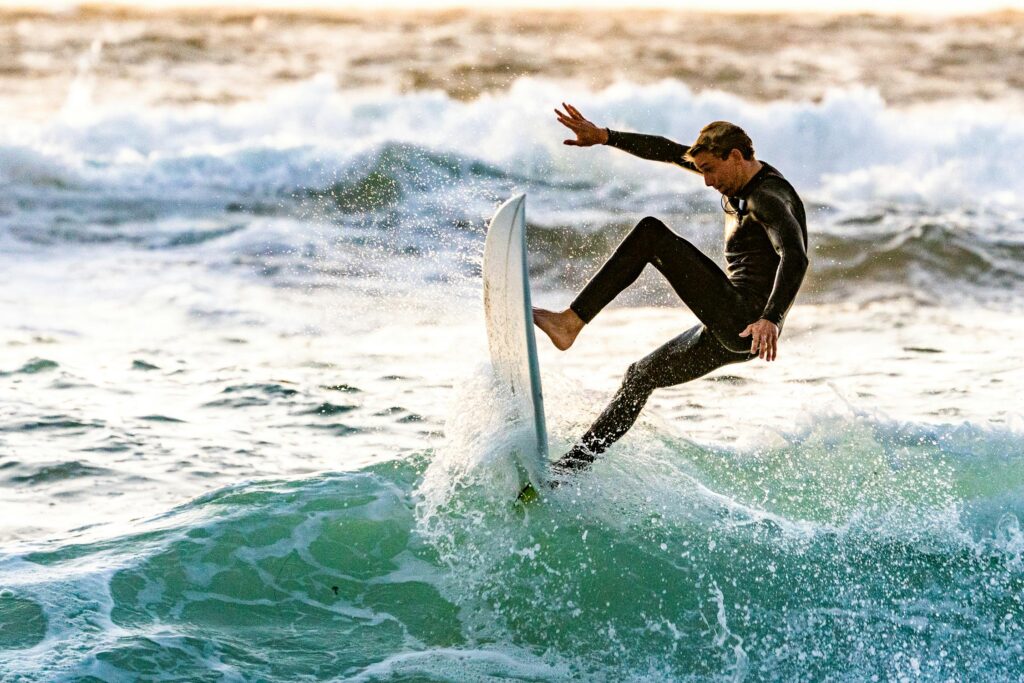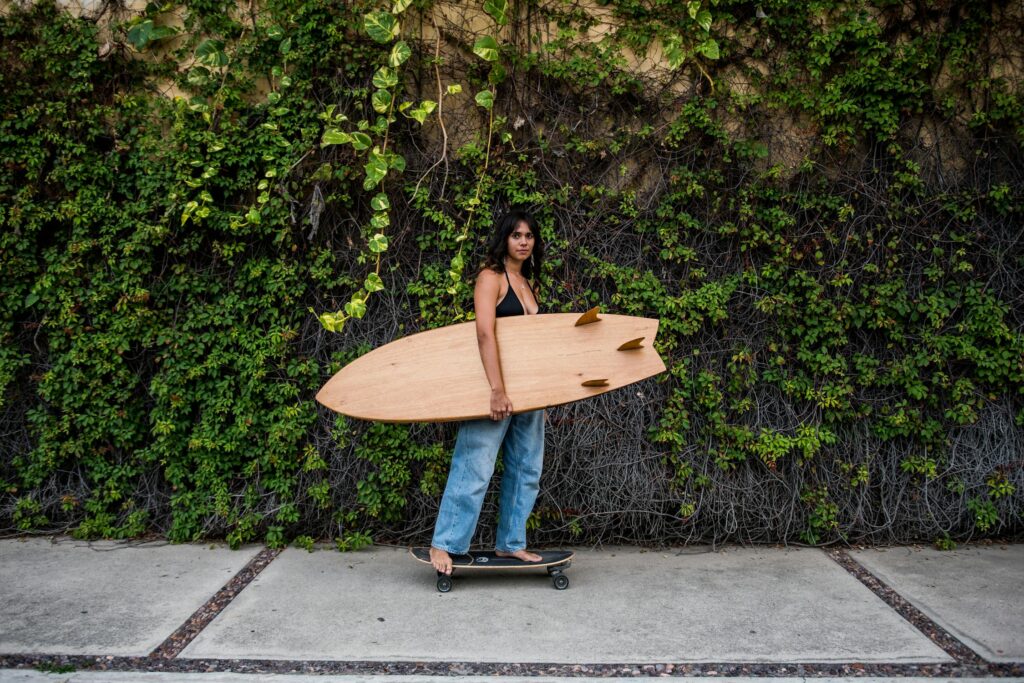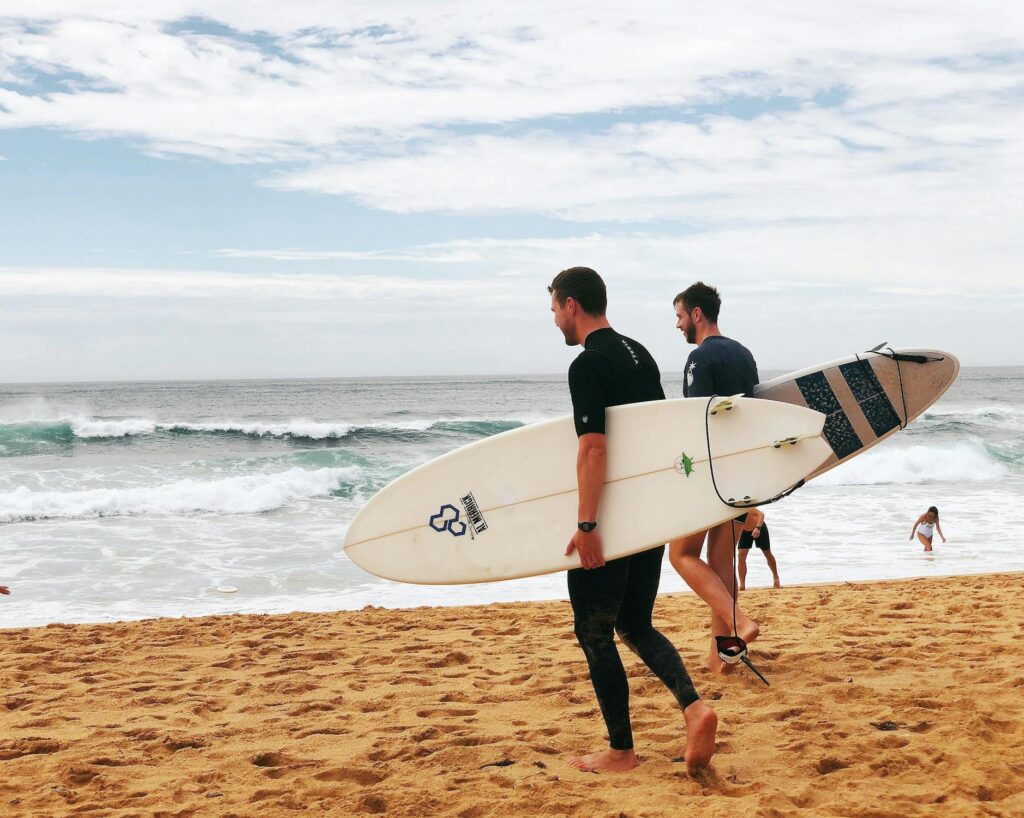California’s surf culture has significantly influenced global fashion trends. Surfing arrived in California in the early 20th century, brought by Hawaiian surfers. The sport quickly gained popularity, especially in Southern California. The laid-back, sun-soaked vibe of California’s surf culture captivated people worldwide, setting the stage for its enduring impact on fashion. Today, surf-inspired clothing and accessories continue to shape global fashion trends, embodying a timeless appeal.
Contents
Key Elements of Surf Fashion
Surf fashion is rooted in practicality and style, designed to cater to the needs of surfers while reflecting a relaxed, beach-centric lifestyle. Typical surf attire includes board shorts, wetsuits, and bikinis. Boardshorts are popular for their comfort and quick-drying fabric, making them ideal for riding waves and lounging on the beach. Wetsuits, essential for colder waters, provide thermal insulation and flexibility, allowing surfers to stay in the water longer. Bikinis, favored for their minimalistic design, offer freedom of movement and a fashionable look, perfect for sunny beach days.

Companies like Quiksilver, Billabong, and O’Neill started as small surf shops and grew into international powerhouses, setting trends and standards in surf fashion. These brands, among others, are part of the broader landscape of clothing brands in the USA that have gained worldwide recognition. Quiksilver, founded in 1969, began with a focus on board shorts and expanded to a full range of surf apparel. Billabong, starting in the 1970s, quickly became known for its durable and stylish surfwear. O’Neill, established in 1952, is credited with inventing the wetsuit, revolutionizing cold-water surfing.
Evolution of Surf Fashion Over the Decades
Surf fashion has evolved significantly from the 1950s to the present, reflecting broader cultural shifts and technological advancements. The journey of surfwear highlights the dynamic interplay between practicality and style, driven by the changing needs and tastes of surfers and the influence of popular culture.
Changes in Surf Fashion from the 1950s to the Present
- 1950s: Surf fashion was simple and functional, with cotton T-shirts, canvas shorts, and heavy wooden surfboards. The look was casual, reflecting the laid-back lifestyle of early surfers.
- 1960s and 1970s: Bright colors and bold patterns became popular. Boardshorts made from new, quick-drying fabrics emerged, and wetsuits became more advanced, offering better insulation and flexibility.
- 1980s and 1990s: Surf fashion became mainstream, with major brands like Quiksilver and Billabong leading the way. Neon colors, graphic prints, and oversized fits were trendy. Surf culture influenced streetwear, merging the two styles.
- 2000s to Present: Sustainable materials and ethical practices gained importance. Surf fashion embraced minimalism with sleek designs and muted tones. Technological advancements led to more functional and comfortable surfwear.
Influence of Music, Movies, and Media on Surf Fashion:
- 1960s: The Beach Boys and surf movies like “Gidget” popularized surf culture, making it a global phenomenon.
- 1970s and 1980s: Films like “Big Wednesday” and surf documentaries showcased the surf lifestyle, influencing fashion trends.
- 1990s to 2000s: Surf brands sponsored major sports events and collaborated with celebrities, embedding surf culture into mainstream fashion.
- Present: Social media platforms like Instagram and influencers continue to shape surf fashion trends, making them accessible to a global audience.
Global Impact of California Surf Brands
California surf brands like Quiksilver, Billabong, and O’Neill started small but quickly grew into international icons. Their expansion was fueled by the growing popularity of surf culture and the appeal of the California lifestyle. These brands opened stores and distribution centers around the world, making their products accessible to a global audience. The spread of surf competitions and events further boosted their international presence, establishing these brands as leaders in both surfwear and casual fashion.

Collaboration with Global Fashion Designers and Brands
In recent years, California surf brands have collaborated with high-end fashion designers and mainstream brands to create unique collections that blend surf culture with contemporary fashion. These partnerships have brought surf-inspired styles to a wider audience, influencing trends across different markets. For instance, collaborations with brands like Gucci and Supreme have integrated surf aesthetics into luxury fashion, creating a fusion that appeals to diverse consumer bases.
Surf Culture’s Role in Modern Streetwear
Surf culture has significantly influenced modern streetwear, seamlessly integrating its relaxed, beach-inspired aesthetics into everyday fashion. Elements such as board shorts, graphic tees, and hoodies have become staples in streetwear, reflecting the laid-back and adventurous spirit of surfing. Brands like Stüssy, which originated from the surf scene, have played a pivotal role in merging surf style with urban fashion. This integration is evident in the popularity of oversized fits, tie-dye patterns, and casual, comfortable fabrics that dominate streetwear collections. Surf-inspired trends like bucket hats, flip-flops, and tropical prints have become mainstream and are embraced by fashion enthusiasts and celebrities alike.

Sustainability and Ethical Practices in Surf Fashion
The influence of surfing doesn’t end with fashion; many have relocated to California to pursue such a lifestyle. Moving and living in California offers a unique opportunity to immerse yourself in the surf culture, as attested by Good Neighbors Moving Company Los Angeles, who moved many of their clients here. Especially in recent years, as the idea of living in California has become even more attractive than before. And one of the main reasons for that is California’s surf culture’s commitment to sustainability and ethical practices.
Emphasis on Eco-Friendly Materials and Practices
California surf brands are leading the way in promoting sustainable fashion, emphasizing eco-friendly materials and ethical production methods. They focus on:
- Recycled materials: Using recycled materials, such as plastics and fabrics, to create surfwear and accessories.
- Organic fabrics: Incorporating organic cotton and hemp to reduce environmental impact.
- Eco-friendly dyes: Utilizing natural and non-toxic dyes to minimize water pollution.
- Fair labor practices: Ensuring fair wages and safe working conditions for all employees in the supply chain.
The Role of California Surf Brands in Promoting Sustainable Fashion
California surf brands such as Patagonia, O’Neill, and Vissla are at the forefront of the sustainable fashion movement. Patagonia, for instance, has long been a pioneer in using recycled materials and promoting environmental activism. O’Neill focuses on creating eco-friendly wetsuits and surf gear, while Vissla supports sustainability through its “Creators and Innovators” philosophy, encouraging creativity and responsible manufacturing. These brands are setting a high standard in the industry, inspiring others to adopt similar practices.
The Lasting Impact of California’s Surf Culture on Global Fashion
California’s surf culture has left an indelible mark on global fashion, blending practicality with a laid-back style that appeals to a wide audience. From the evolution of surf attire over the decades to the significant influence of surf brands worldwide, this culture has shaped trends far beyond the beach. Integrating surf elements into streetwear and the growing emphasis on sustainability reflect surf culture’s dynamic and forward-thinking nature. As California surf brands continue to innovate and inspire, their impact on fashion remains profound and far-reaching. Embracing this culture means adopting a distinctive style and supporting eco-friendly and ethical practices that benefit the planet.






